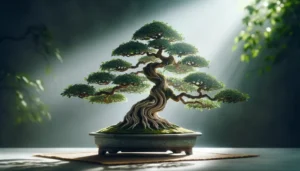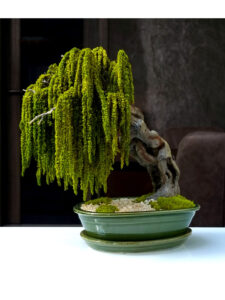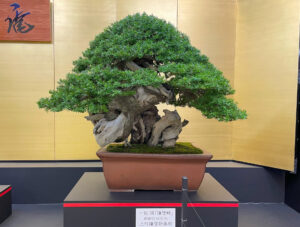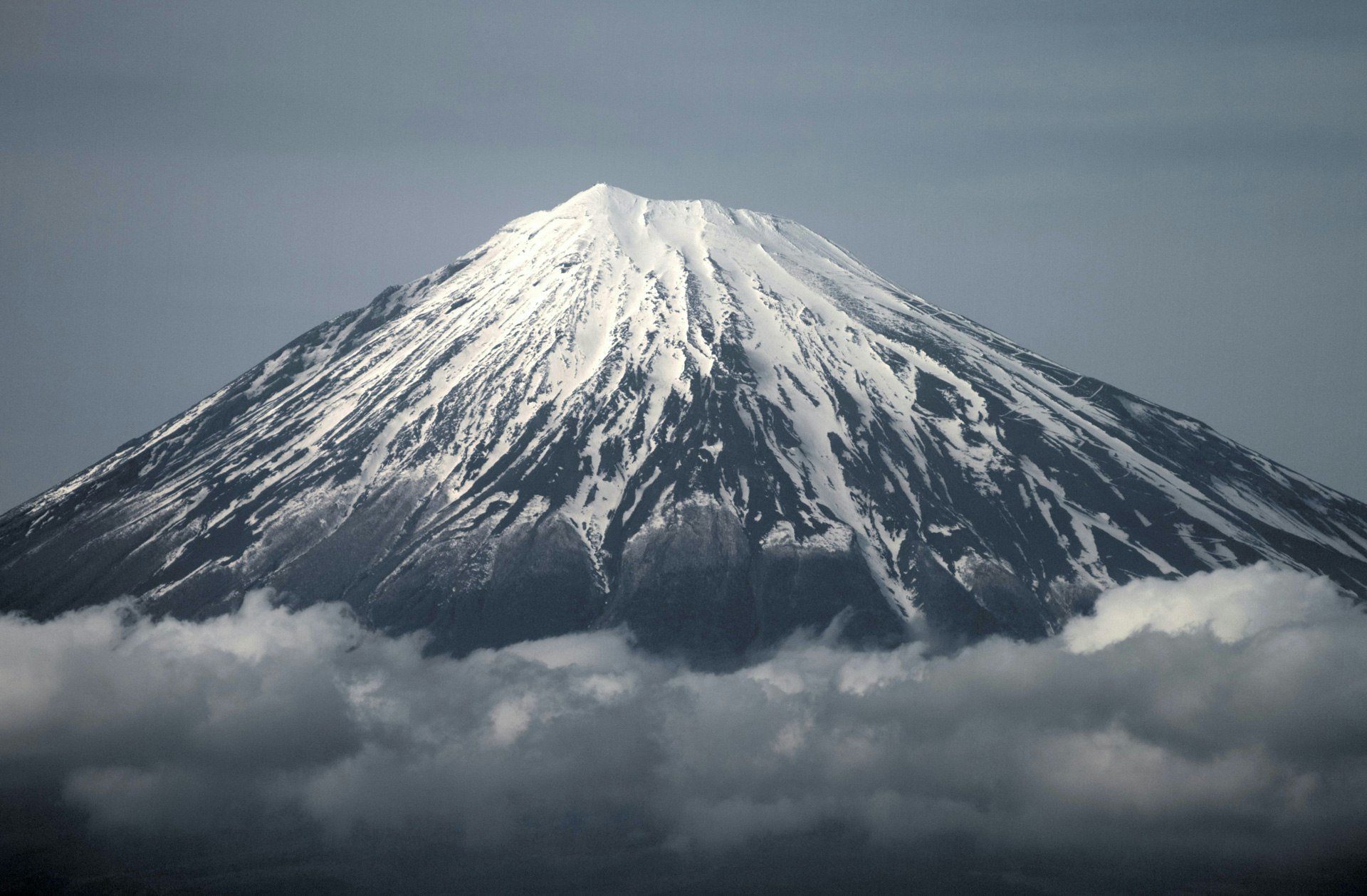Bonsai trees are not merely plants; they are living works of art that require dedication, patience, and knowledge to thrive. As a beginner embarks on the journey of bonsai cultivation, one of the most crucial decisions they’ll face is selecting the right species. This decision lays the foundation for the tree’s future growth and the enjoyment it will bring to its caretaker. In this comprehensive guide, we’ll explore the key factors to consider when choosing a bonsai tree and provide essential tips for its care and maintenance.
Understanding Bonsai Species

When delving into the world of bonsai, beginners are often overwhelmed by the vast array of species available. Each species has its own unique characteristics, growth habits, and care requirements. Understanding these differences is essential for selecting a bonsai tree that aligns with your preferences and lifestyle.
Firstly, consider the climate and environment in which you reside. Certain species of bonsai thrive in specific conditions, such as tropical or temperate climates. For example, the Ficus and Schefflera varieties are well-suited to indoor cultivation, making them ideal choices for enthusiasts living in colder regions.
If you are driving a bonsai tree transport truck and need to ensure its protection on the road, especially in Tennessee, you should look into fleet truck insurance in Tennessee. It’s important to safeguard your vehicle and cargo against any unforeseen circumstances while traveling through different climates and terrains.
Secondly, assess the level of care and maintenance you’re willing to commit to. Some bonsai species, like the Juniper and Pine, are relatively forgiving and resilient, making them suitable for beginners. Others, such as the Azalea and Japanese Maple, require more meticulous care and attention to thrive.
Similarly, choosing a company for dumpster rental in Fort Collins will depend on your project’s needs. Do you need a quick and easy option, or are you looking for a company that offers specific disposal services?
Lastly, consider the aesthetic qualities you desire in a bonsai tree. Are you drawn to the graceful curves of the Willow Leaf Fig or the delicate foliage of the Chinese Elm? Take time to explore different species and observe their unique characteristics before making a decision.
Selecting the Right Bonsai Tree
Once you’ve gained a basic understanding of bonsai species, it’s time to select the right tree for your collection. This decision should be guided by a combination of personal preference, practical considerations, and long-term goals.
Begin by visiting reputable nurseries or bonsai shops to explore the available options firsthand. Take note of the health and vitality of each tree, as well as its overall aesthetic appeal. Look for well-proportioned trunks, balanced branches, and vibrant foliage – indicators of a healthy bonsai specimen.
Consider the size and style of the bonsai tree in relation to your living space and lifestyle. Compact varieties like the Shohin and Mame are well-suited to small apartments or office settings, while larger specimens such as the Chokkan and Moyogi make striking focal points in outdoor gardens.
Taking care of a bonsai tree is a bit like tending to wounds in trauma surgery in Texas. Just as you weigh the age and maturity of the bonsai for optimal growth, trauma surgeons consider various factors to heal injuries effectively. Younger trees, like younger patients, allow for long-term care and shaping, while older specimens, akin to more mature cases, offer instant gratification with their established form. Find the right balance in nurturing your bonsai and supporting patients through trauma surgery in Texas, acknowledging the importance of both immediate results and the journey from the early stages.
Caring for Your Bonsai Tree
Once you’ve selected the perfect bonsai tree, it’s time to embark on the rewarding journey of caring for and nurturing it. Proper maintenance is essential for ensuring the health, vigor, and longevity of your bonsai specimen.
Start by establishing a regular watering schedule based on the specific needs of your bonsai species and environmental conditions. Avoid overwatering, which can lead to root rot, and ensure adequate drainage to prevent waterlogged soil.
In addition to watering, provide your bonsai tree with the appropriate amount of sunlight and ventilation. Most bonsai species thrive in well-lit areas with indirect sunlight, although some may require partial shade during the hottest parts of the day.
Regular pruning and shaping are essential for maintaining the aesthetic appeal and structural integrity of your bonsai tree. Use sharp bonsai shears to remove excess growth and encourage the development of fine branching and foliage pads.
Lastly, monitor your bonsai tree for signs of pests, diseases, or other health issues. Early detection and intervention are crucial for preventing the spread of problems and preserving the vitality of your bonsai specimen.
Exploring Bonsai Styling Techniques

Bonsai styling is an art form that allows enthusiasts to express their creativity and vision through the manipulation of tree branches, foliage, and overall form. There are several traditional styling techniques used in bonsai cultivation, each with its own unique principles and aesthetic effects.
One common technique is known as “wiring,” which involves wrapping aluminum or copper wire around branches to guide their growth and create desired shapes. Wiring requires patience and precision, as improper application can damage the tree and lead to scarring.
Another popular styling technique is “pruning,” which involves selectively removing branches and foliage to enhance the tree’s overall structure and balance. Pruning should be done with sharp bonsai shears and careful consideration of the tree’s natural growth patterns.
Just like a bonsai tree requires special care, so does your body. In fact, you might consider laser hair removal treatment in Markham for a long-lasting and smooth look on your skin.
Additionally, “carving” and “shari” techniques are used to create the appearance of age and weathering on bonsai trees. Carving involves sculpting the trunk and branches to mimic natural features such as scars and hollows, while shari involves stripping bark to expose the underlying wood.
If you’re utilizing solar energy to power your systems for bonsai care, you might want to consider reaching out to a company for solar system repair in Hillsborough. They can help ensure your solar setup is running smoothly, allowing you to focus on the intricate art of bonsai cultivation.
Mastering Bonsai Repotting and Root Pruning
Repotting is an essential aspect of bonsai care that involves transferring the tree to a new container with fresh soil. Repotting should be done periodically to prevent root-bound conditions and replenish the soil’s nutrients.
Before repotting, carefully remove the bonsai tree from its current container and gently untangle the roots. Trim any excessively long or tangled roots using sharp bonsai shears, taking care not to remove more than one-third of the root mass.
Taking care of your bonsai can be demanding on your body. If you’ve been spending all day working on your tree, consider scheduling an appointment for physical therapy in Austin to address any aches or pains.
Next, select a suitable container with adequate drainage holes and fill it with a well-draining bonsai soil mix. Position the bonsai tree in the center of the container and backfill with soil, ensuring that the roots are evenly distributed and covered.
After repotting, water the bonsai tree thoroughly to help settle the soil and promote root establishment. If you’re curious about how much water it’s getting, you could try using a turbine flow meter to measure it accurately. Keep the tree in a shaded area for several weeks to allow it to recover from the repotting process before gradually reintroducing it to its usual growing conditions.
Understanding Bonsai Seasonal Care
Bonsai trees, like all living organisms, undergo seasonal changes that influence their growth and development. Understanding these seasonal cycles is essential for providing optimal care and ensuring the health and vitality of your bonsai specimen throughout the year.
Don’t forget that your kids also need special care, especially when it comes to their oral health. Regular check-ups and preventive pediatric dentistry in Fayetteville NC, can help keep their smiles bright and healthy.
In spring, bonsai trees emerge from dormancy and begin to actively grow new foliage and branches. This is a critical time for fertilization, as the tree requires nutrients to support its rapid growth and development.
During the summer months, bonsai trees benefit from regular watering and protection from intense sunlight and heat. Monitor soil moisture levels closely and adjust your watering schedule as needed to prevent drought stress. Learning about bonsai care can be a fun and rewarding hobby, and if you’re looking for creative ways to document your journey, consider researching video production in Philadelphia.
In autumn, bonsai trees undergo a period of transition as they prepare for dormancy. Reduce fertilization and gradually decrease watering to help the tree acclimate to the changing conditions.
Creating Bonsai Display and Exhibition
Displaying bonsai trees is an art form in itself, requiring careful consideration of composition, balance, and harmony. Whether showcasing a single specimen or a collection of trees, creating an engaging and visually appealing display enhances the beauty and impact of bonsai cultivation. In fact, mastering the art of bonsai can be a meditative practice, similar to yoga training in Austin.
Start by selecting a suitable display stand or table that complements the size and style of your bonsai tree. Consider factors such as height, color, and texture to create a cohesive backdrop that highlights the tree’s unique features.
Arrange the bonsai tree on the display stand using principles of balance and proportion. To add a touch of personality, incorporate some Colorado shades slightly off-center and at a slight angle to create visual interest and dynamism.
Exploring Bonsai Symbolism and Cultural Significance
Bonsai trees hold profound cultural significance in many societies, representing concepts such as beauty, harmony, and the cycle of life. Just like nurturing a bonsai requires patience and knowledge, mastering initial firearms training in Los Angeles demands dedication and skill development. Understanding the symbolism associated with bonsai cultivation adds depth and meaning to the art form, enriching the experience for enthusiasts and practitioners alike.
In Japanese culture, bonsai is often associated with Zen Buddhism and the pursuit of enlightenment through contemplation of natural beauty. Bonsai trees are revered as living expressions of harmony and balance, embodying the principles of wabi-sabi – the acceptance of imperfection and transience.
In Chinese culture, bonsai is viewed as a symbol of longevity, prosperity, and good fortune. Bonsai trees are often gifted to mark significant life events such as weddings, births, and retirements, symbolizing the wish for a long and prosperous life.
Embracing Bonsai Community and Resources

Joining a bonsai community or club is a valuable opportunity to connect with fellow enthusiasts, share knowledge and experiences, and access valuable resources and support. Whether you’re a beginner or an experienced practitioner, engaging with the bonsai community enriches the journey of bonsai cultivation and fosters a sense of camaraderie and belonging.
In case you are going on the upcoming bonsai festival, consider arranging a Denver limousine for a luxurious and convenient ride to the event.
Attend bonsai workshops, demonstrations, and exhibitions to learn from seasoned experts and gain hands-on experience with bonsai techniques and practices. Participate in bonsai competitions and exhibitions to showcase your skills and connect with fellow enthusiasts from around the world.
Online forums, social media groups, and websites are also excellent resources for accessing information, seeking advice, and connecting with the global bonsai community. Whether you’re looking for tips on caring for your bonsai or want to show off your latest design, these digital platforms offer a wealth of information and connections. You can even find resources for finding designer custom doors to create a unique display for your bonsai collection! So take advantage of these digital platforms to expand your knowledge, share your journey, and connect with like-minded individuals who share your passion for bonsai cultivation.
Conclusion
In conclusion, bonsai cultivation transcends mere gardening; it is a holistic experience that fosters a deep connection with nature, art, and culture. Through the careful selection of species, meticulous care and maintenance, and exploration of advanced techniques and cultural symbolism, enthusiasts embark on a journey of self-discovery and appreciation for the beauty and resilience of bonsai trees. This appreciation can even extend to owning branded merchandise supplier bonsai-related items, further solidifying their connection to this unique art form.
As bonsai practitioners nurture their trees, they also cultivate patience, discipline, and a profound respect for the passage of time. Each bonsai specimen tells a story of growth, adaptation, and the delicate balance between human intervention and natural beauty. Whether displayed in a tranquil garden setting, a bustling urban apartment, or a dedicated bonsai exhibition, these living works of art inspire awe and reverence for the wonders of the natural world.
As you embark on your own bonsai journey, remember that success lies not only in the mastery of techniques but also in the cultivation of mindfulness, humility, and reverence for the living organisms under your care. Embrace the challenges and triumphs that come with bonsai cultivation, and cherish the moments of quiet contemplation and connection with the natural world. In doing so, you’ll not only create beautiful bonsai trees but also cultivate a deeper understanding of yourself and the world around you.



